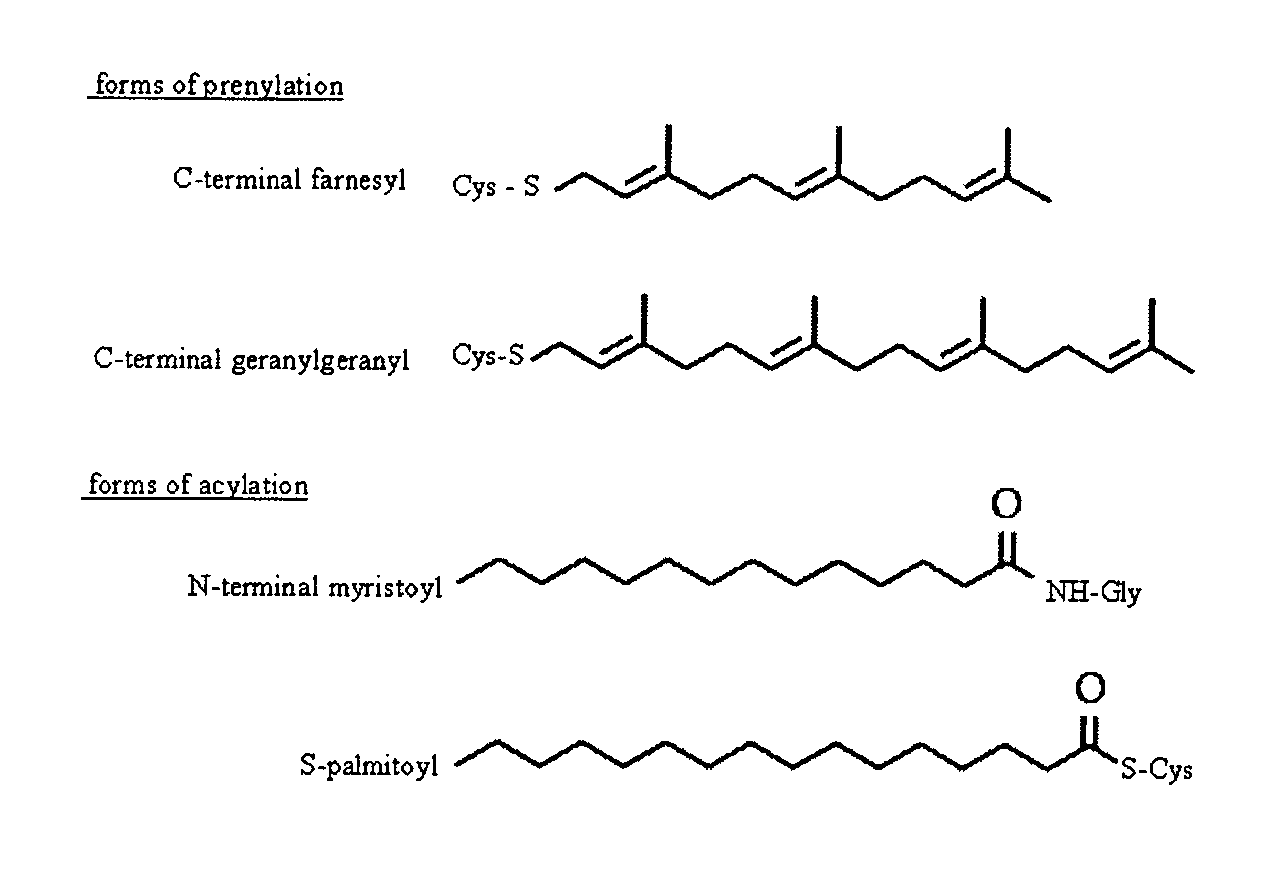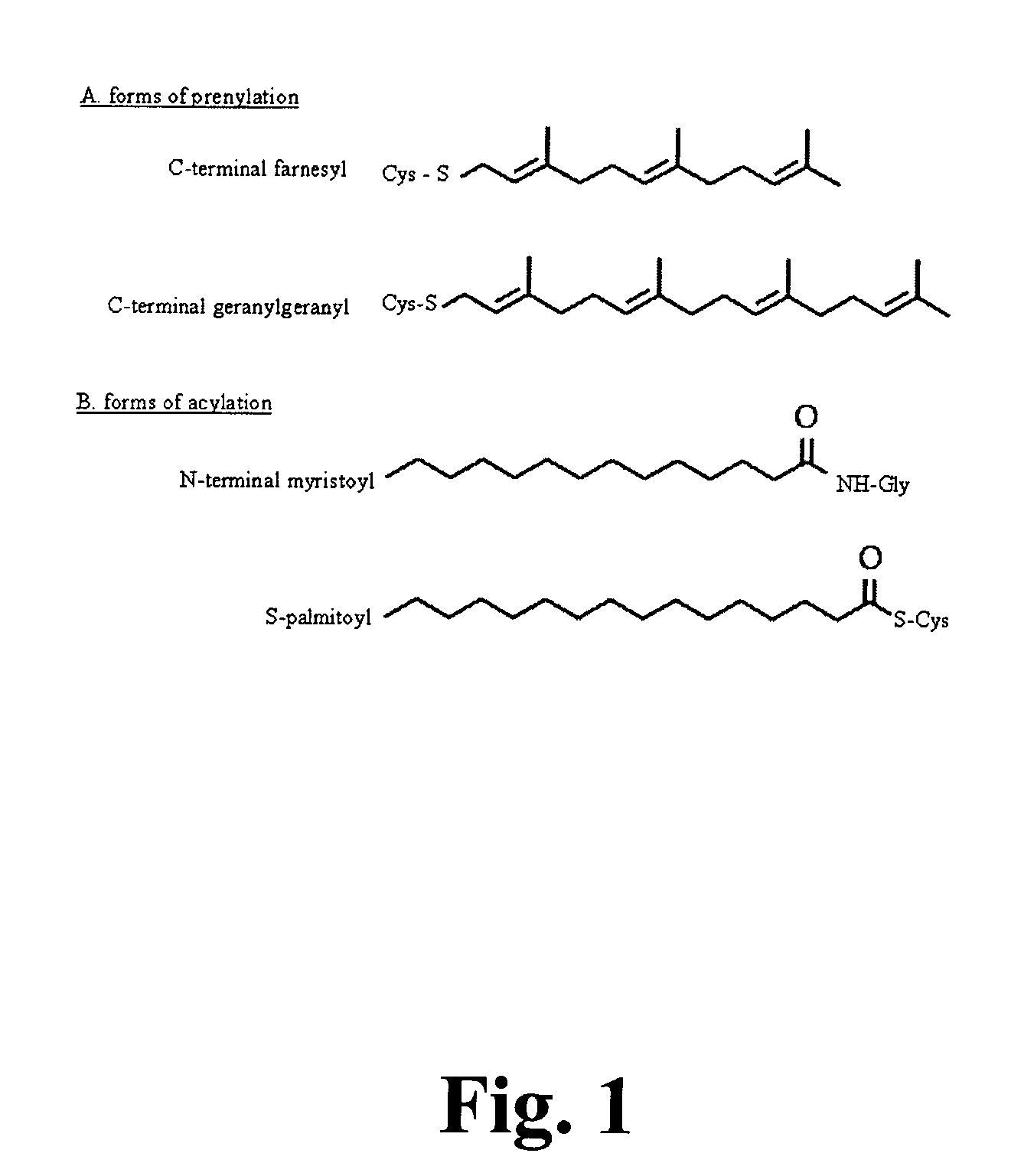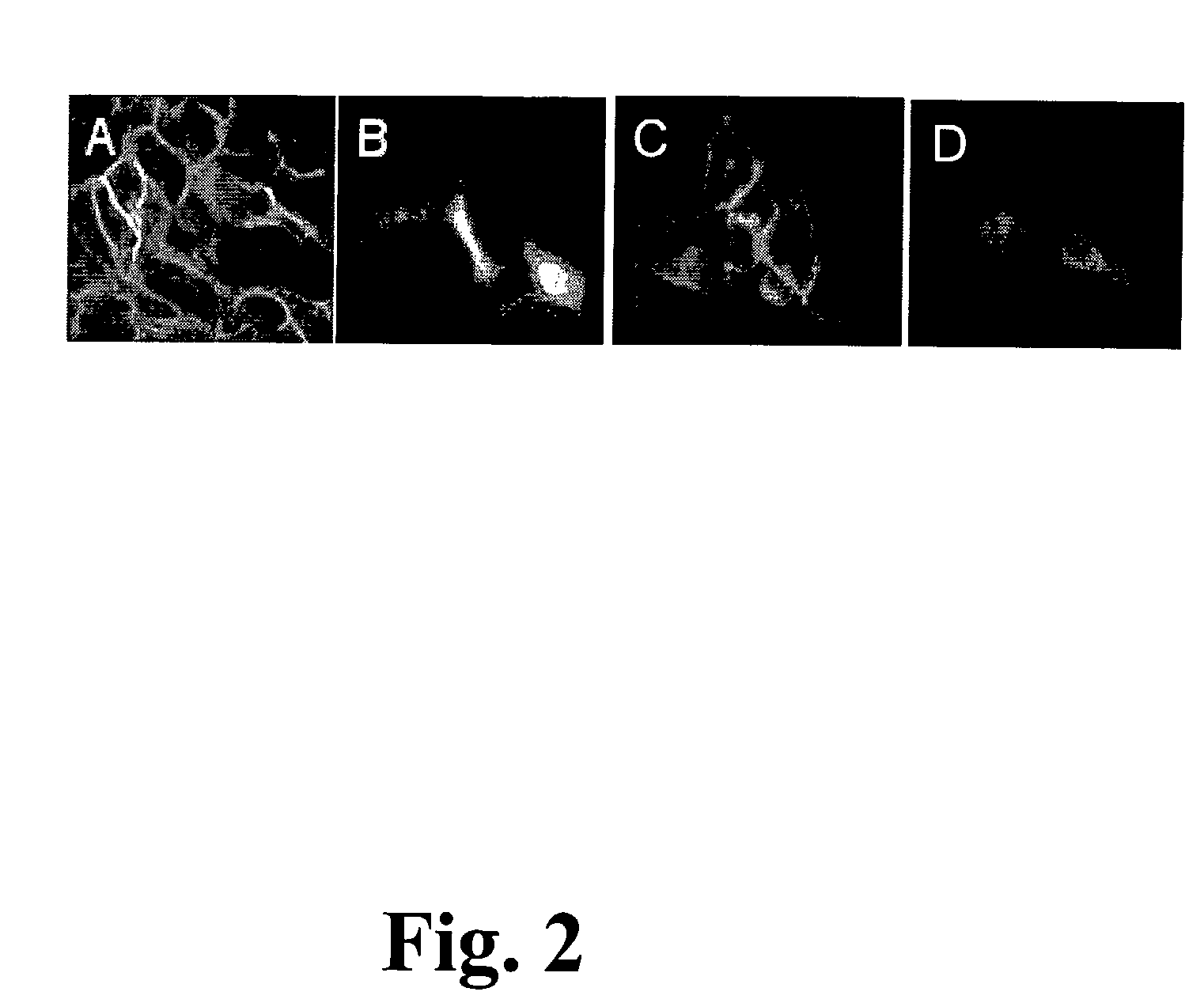Functional Genomics and Gene Trapping in Haploid or Hypodiploid Cells
a technology of functional genomics and hypodiploid cells, applied in the field of functional genomics and gene trapping in haploid or hypodiploid cells, can solve the problem of impracticality of functional genomics methods in diploid cells, and achieve the effect of facilitating the carrying out of functional genomics experiments
- Summary
- Abstract
- Description
- Claims
- Application Information
AI Technical Summary
Benefits of technology
Problems solved by technology
Method used
Image
Examples
example 1
Preliminary Studies
[0103]To demonstrate the feasibility of finding S-PATs using a fluorescent reporter of palmitoylation, in combination with gene trapping and HTM, it is useful to establish that palmitoylation is a necessary and sufficient condition to cause the Green Fluorescent Protein: S-Palmitoylation Substrate (GFP:SPS) reporter to be localized to the plasma membrane (PM). Having this ability allows one to separate the role of palmitoylation from the influence of other signals, like protein-protein interactions, that might alter subcellular targeting. Though an example where S-palmitoylation is the exclusive physical property directing subcellular localization may not exist naturally, creating it with the reporters described herein allows one to look specifically and exclusively for modulators of S-palmitoylation of this specific, exemplary substrate.
[0104]In order to further demonstrate the feasibility of invention methods, it is also useful to demonstrate that the signaling ...
example 2
Palmitoylation is Necessary and Sufficient to Cause Localization of GAP43:GFP to the PM
[0105]There are many cases in which multiple targeting signals within a full-length protein work in concert to determine its final, subcellular location. Often, protein-protein interaction domains such as PDZ domains are found in close, linear and / or structural proximity to palmitoylatable cysteines of the same protein. A prime example of this is PSD-95 (Craven et al., 1999; El-Husseini et al., 2000; Topinka & Bredt, 1998). Isolating the portion of such a protein that is acting as the SPS is an ideal way to create a sensor specific for palmitoylation rather than for the function of the original, full-length protein from which the peptide was borrowed.
[0106]The N-terminus of GAP-43 is doubly palmitoylated on two adjacent cysteine residues. When an 18-residue S-palmitoylation substrate peptide from the N-terminus GAP43 is fused to the N-terminus of GFP, this peptide alone, by virtue of its palmitoyl...
example 3
The Enzymatic Pathway for S-palmitoylation of GAP43:GFP is Intact in ICR-2A Cells
[0108]The palmitoylation sensor, GAP43:GFP, is seen in FIG. 3 to localize appropriately to the PM of haploid ICR-2A cells, illustrating with these confocal images that a pathway leading to palmitoylation of the sensor is intact in the cell line. GAP43:GFP is expressed transiently under the control of a CMV promoter in the expression plasmid pcDNA3 (InVitrogen). Scale bar=50 μm.
PUM
| Property | Measurement | Unit |
|---|---|---|
| residence half life | aaaaa | aaaaa |
| cell morphology | aaaaa | aaaaa |
| Green Fluorescent Protein | aaaaa | aaaaa |
Abstract
Description
Claims
Application Information
 Login to View More
Login to View More - R&D
- Intellectual Property
- Life Sciences
- Materials
- Tech Scout
- Unparalleled Data Quality
- Higher Quality Content
- 60% Fewer Hallucinations
Browse by: Latest US Patents, China's latest patents, Technical Efficacy Thesaurus, Application Domain, Technology Topic, Popular Technical Reports.
© 2025 PatSnap. All rights reserved.Legal|Privacy policy|Modern Slavery Act Transparency Statement|Sitemap|About US| Contact US: help@patsnap.com



